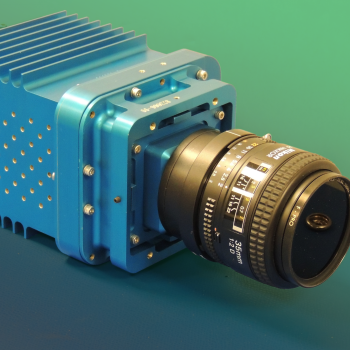Dual-Mode Imaging Receiver

Free-space optical communication (FSOC) offers tremendous potential in providing high-speed and secure data transmission, primarily used in satellite communication and wireless networks. However, maintaining FSOC links poses a considerable challenge due to the need for precise spatial alignment and calibration of the transmitter’s and receiver’s spatial encoders. This alignment is typically maintained by using a precision mechanical gimbal, adding a layer of complexity and resource-demanding maintenance. The current approach necessitates fine-tuning of the mechanical setup, ensuring constant alignment across varying topographies. Furthermore, most FSOC technologies require a two-aperture setup, transitioning from a wide field-of-view (FOV) acquisition aperture to a narrow FOV detection and decoding aperture. This setup not only necessitates a beacon at the transmitter but also requires the system to adapt to different geometries dynamically, adding additional complexity and limitations.
Technology Description
The dual-mode imaging receiver (DMIR) is a unique contribution to free-space optical communication (FSOC) technologies. Unlike traditional FSOC technologies that require precise spatial alignment and calibration of transmitters and receivers, the DMIR uses electronic receive beam selection to acquire and track transmitters. The result is a less-restrictive mechanical setup, permitting operation even with coarse mechanical pointing and a single aperture. The receiver is adapted to function in both static (fixed point to point) and dynamic geometries. What distinctly sets DMIR apart from other FSOC technologies is the elimination of the need for a precision mechanical gimbal. This elimination is achieved by transitioning away from a two-aperture setup – one wide field-of-view acquisition aperture and another narrow field-of-view detection and decoding aperture – toward employment of a single aperture. Consequently, there is no requirement for a beacon at the transmitter, creating a less complex and less resource-demanding setup.
Benefits
- Complexity of FSOC system is reduced because the need for a precision mechanical gimbal is eliminated.
- Accessible coarse mechanical pointing makes the technology more user-friendly.
- Usefulness in both static and dynamic geometries is due to the single aperture use.
- System is less resource-demanding because it eliminates a beacon at the transmitter.
- The FSOC efficiency is boosted through the electronic receive beam selection technique.
Potential Use Cases
- Long-distance, secure data transmission as used in satellite communication.
- High-speed wireless network hubs in remote and inaccessible locations.
- Robotics and drones requiring wireless communication without physical connectivity.
- Non-line-of-sight communication applications where alignment is particularly challenging.
- Measurement and telemetry communication where penetration through substances is necessary.